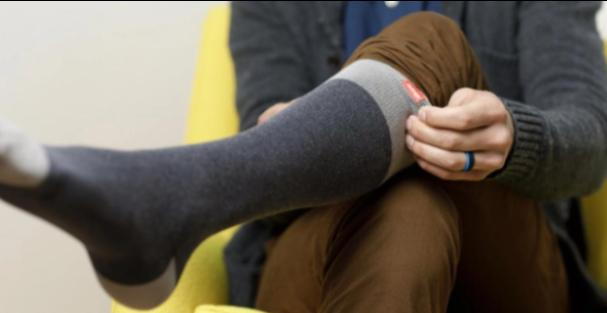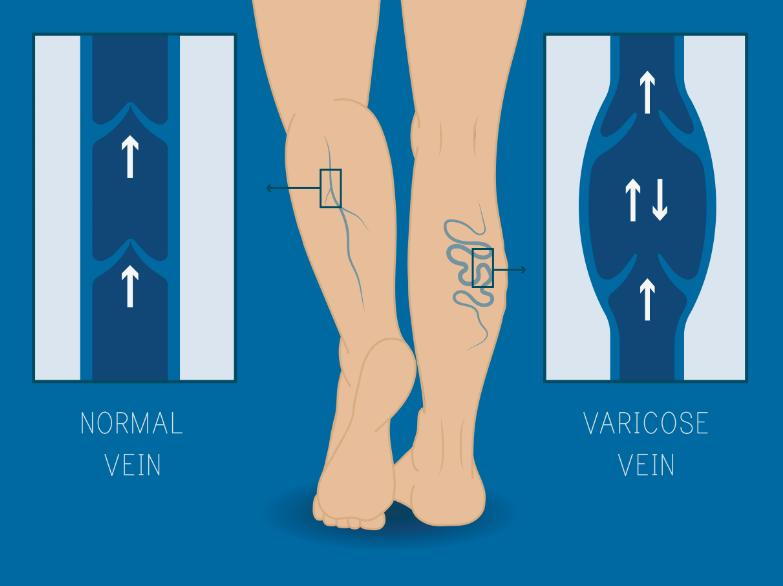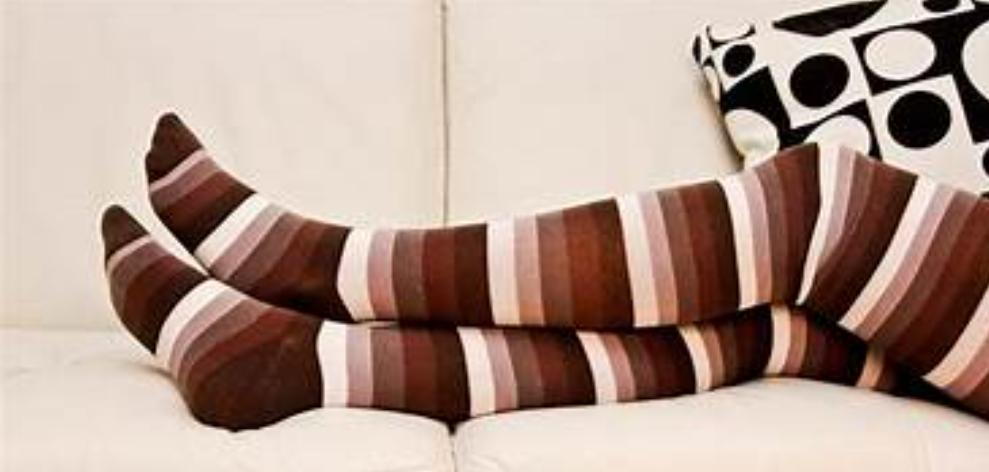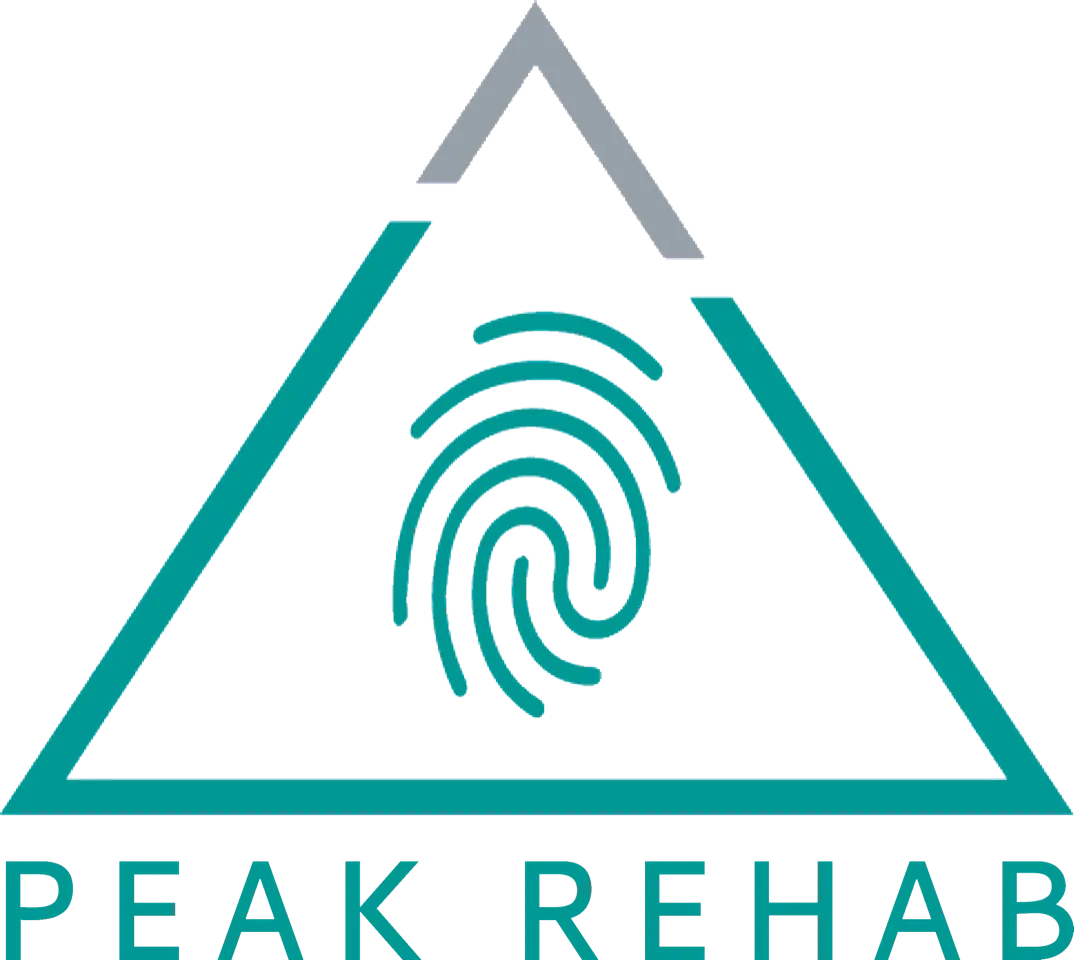Stepping Towards Relief: Understanding Varicose Veins and the Role of Compression Socks

Varicose veins are enlarged, twisted, and swollen veins that usually occur in the legs and feet. They are often blue or purple in color and can be visible through the skin. Varicose veins occur when the valves inside the veins, which are responsible for regulating blood flow, become weak or damaged. This causes blood to pool in the veins, leading to their enlargement and twisting.
Varicose veins can cause a variety of symptoms, including pain, itching, and aching in the affected area. They may also cause a feeling of heaviness or fatigue in the legs, particularly after prolonged standing or sitting. In severe cases, varicose veins can lead to skin changes such as discoloration, ulceration, or inflammation.
Several factors can contribute to the development of varicose veins, including genetics, age, gender, pregnancy, obesity, and prolonged sitting or standing. Treatment options for varicose veins range from lifestyle changes, such as exercise and weight loss, to medical interventions such as compression stockings, vein ablation, and surgery.

The main causes of varicose veins include:
Age: As we age, our veins become weaker and less flexible, which can lead to the development of varicose veins.
Genetics: Family history can play a role in the development of varicose veins. If one or both of your parents have varicose veins, you may be more likely to develop them as well.
Gender: Women are more likely than men to develop varicose veins, which may be due to hormonal factors and the added pressure on the veins during pregnancy.
Pregnancy: The increased blood volume and hormonal changes during pregnancy can put added pressure on the veins, leading to their enlargement and the development of varicose veins.
Obesity: Excess weight can put added pressure on the veins, leading to their weakening and the development of varicose veins.
Prolonged sitting or standing: Jobs or activities that require prolonged periods of sitting or standing can put added pressure on the veins, leading to their weakening and the development of varicose veins.
Trauma: Injuries or trauma to the veins can cause damage to the valves, leading to the development of varicose veins.
There are several treatment options available for varicose veins, depending on the severity of the condition. These include:
Lifestyle changes: This includes regular exercise, weight loss, avoiding prolonged sitting or standing
Compression Stockings: which are worn on the legs and we will discuss in detail
Sclerotherapy: A solution is injected into the affected veins, causing them to collapse and eventually disappear.
Endovenous laser treatment (EVLT): A laser fiber is inserted into the affected veins, which heats and seals the vein, causing it to collapse.
Radiofrequency ablation: A catheter is inserted into the affected vein, which uses radiofrequency energy to heat and seal the vein, causing it to collapse.
Ambulatory phlebectomy: Small incisions are made in the skin to remove the affected veins.
Vein stripping: The affected veins are removed through small incisions in the skin.
Endoscopic vein surgery: A small camera is inserted into the affected veins to guide the surgeon in removing them.

The choice of treatment depends on the severity of the condition, the size and location of the affected veins, and the patient's overall health. It is important to discuss treatment options with a healthcare provider to determine the best course of action for each individual case.
Compression stockings are specialized socks or stockings that apply pressure to the legs and improve blood flow. They are typically made of a stretchy, elastic material that fits snugly around the legs an.d feet. Compression stockings are designed to help prevent and treat conditions such as varicose veins, deep vein thrombosis (DVT), and edema (swelling)
Compression stockings work by applying graduated pressure to the legs, with the highest pressure at the ankle and gradually decreasing pressure as the stocking goes up the leg. This helps to improve blood flow by helping the veins and muscles move blood back up to the heart.
Compression stockings come in different levels of compression, with higher levels of compression providing more pressure. They can be purchased here at Peak Rehab, in Brampton once they are prescribed by a healthcare provider. We take measurements to ensure that the compression stockings fit properly and are worn correctly to ensure maximum benefit. We also provide guidance on how to properly use and care for compression stockings. Contact us today to learn more about compression stockings and to come in for a free compression stocking fitting!

Varicose veins are enlarged, twisted, and swollen veins that usually occur in the legs and feet. They are often blue or purple in color and can be visible through the skin. Varicose veins occur when the valves inside the veins, which are responsible for regulating blood flow, become weak or damaged. This causes blood to pool in the veins, leading to their enlargement and twisting.
Varicose veins can cause a variety of symptoms, including pain, itching, and aching in the affected area. They may also cause a feeling of heaviness or fatigue in the legs, particularly after prolonged standing or sitting. In severe cases, varicose veins can lead to skin changes such as discoloration, ulceration, or inflammation.
Several factors can contribute to the development of varicose veins, including genetics, age, gender, pregnancy, obesity, and prolonged sitting or standing. Treatment options for varicose veins range from lifestyle changes, such as exercise and weight loss, to medical interventions such as compression stockings, vein ablation, and surgery.

The main causes of varicose veins include:
Age: As we age, our veins become weaker and less flexible, which can lead to the development of varicose veins.
Genetics: Family history can play a role in the development of varicose veins. If one or both of your parents have varicose veins, you may be more likely to develop them as well.
Gender: Women are more likely than men to develop varicose veins, which may be due to hormonal factors and the added pressure on the veins during pregnancy.
Pregnancy: The increased blood volume and hormonal changes during pregnancy can put added pressure on the veins, leading to their enlargement and the development of varicose veins.
Obesity: Excess weight can put added pressure on the veins, leading to their weakening and the development of varicose veins.
Prolonged sitting or standing: Jobs or activities that require prolonged periods of sitting or standing can put added pressure on the veins, leading to their weakening and the development of varicose veins.
Trauma: Injuries or trauma to the veins can cause damage to the valves, leading to the development of varicose veins.
There are several treatment options available for varicose veins, depending on the severity of the condition. These include:
Lifestyle changes: This includes regular exercise, weight loss, avoiding prolonged sitting or standing
Compression Stockings: which are worn on the legs and we will discuss in detail
Sclerotherapy: A solution is injected into the affected veins, causing them to collapse and eventually disappear.
Endovenous laser treatment (EVLT): A laser fiber is inserted into the affected veins, which heats and seals the vein, causing it to collapse.
Radiofrequency ablation: A catheter is inserted into the affected vein, which uses radiofrequency energy to heat and seal the vein, causing it to collapse.
Ambulatory phlebectomy: Small incisions are made in the skin to remove the affected veins.
Vein stripping: The affected veins are removed through small incisions in the skin.
Endoscopic vein surgery: A small camera is inserted into the affected veins to guide the surgeon in removing them.

The choice of treatment depends on the severity of the condition, the size and location of the affected veins, and the patient's overall health. It is important to discuss treatment options with a healthcare provider to determine the best course of action for each individual case.
Compression stockings are specialized socks or stockings that apply pressure to the legs and improve blood flow. They are typically made of a stretchy, elastic material that fits snugly around the legs an.d feet. Compression stockings are designed to help prevent and treat conditions such as varicose veins, deep vein thrombosis (DVT), and edema (swelling)
Compression stockings work by applying graduated pressure to the legs, with the highest pressure at the ankle and gradually decreasing pressure as the stocking goes up the leg. This helps to improve blood flow by helping the veins and muscles move blood back up to the heart.
Compression stockings come in different levels of compression, with higher levels of compression providing more pressure. They can be purchased here at Peak Rehab, in Brampton once they are prescribed by a healthcare provider. We take measurements to ensure that the compression stockings fit properly and are worn correctly to ensure maximum benefit. We also provide guidance on how to properly use and care for compression stockings. Contact us today to learn more about compression stockings and to come in for a free compression stocking fitting!
Visit our Office
Peak Rehab
2 Kennedy Rd S Suite #4A
Brampton, ON L6W 3E1, Canada
